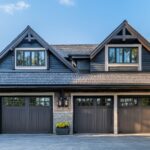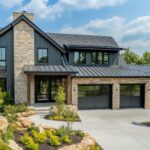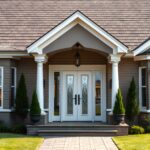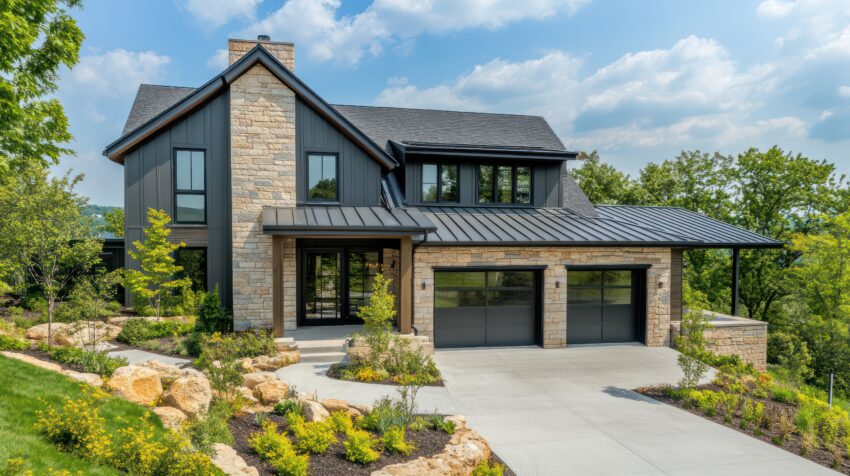When it comes to selecting the right siding for your home, the options can be overwhelming. Three of the most popular materials on the market are vinyl, fiber cement, and wood. Each has its own set of benefits and drawbacks, making the decision a matter of personal preference, budget, and climate considerations. In this article, we’ll delve into the characteristics of these three siding materials, comparing their durability, maintenance requirements, aesthetics, and cost.
1. Overview of Siding Materials
Before diving into the specifics, it’s important to understand what each siding material entails:
Vinyl Siding: Made from polyvinyl chloride (PVC), vinyl siding is a popular choice due to its affordability and low maintenance. It comes in a variety of colors and styles, including traditional lap siding and contemporary vertical panels.
Fiber Cement Siding: This material is composed of a mixture of cement, sand, and cellulose fibers, providing a durable and weather-resistant option. Fiber cement siding mimics the look of wood and can be painted in a variety of colors.
Wood Siding: A classic choice, wood siding is made from natural wood, offering a timeless aesthetic. Common types include cedar, pine, and redwood, each providing unique grain patterns and colors.
2. Durability and Weather Resistance
Vinyl Siding
Vinyl siding is highly durable and can withstand a variety of weather conditions, including wind and rain. However, it can become brittle in extremely cold temperatures and may fade in prolonged sunlight. Despite this, quality vinyl siding is resistant to pests, such as termites.
Fiber Cement Siding
Fiber cement siding is known for its exceptional durability. It can withstand harsh weather, including high winds and heavy rains, and is resistant to rot, pests, and fire. This material is often touted for its long lifespan, typically lasting over 50 years with proper maintenance.
Wood Siding
Wood siding offers natural beauty but requires more upkeep. It is susceptible to rot, pests, and weather damage. Depending on the wood type and treatment, its lifespan can vary significantly, but it typically requires regular maintenance to prevent deterioration.
3. Maintenance Requirements
Vinyl Siding
One of the major advantages of vinyl siding is its low maintenance requirements. It typically only needs periodic cleaning with soap and water to maintain its appearance. Unlike wood, it does not require painting or sealing.
Fiber Cement Siding
Fiber cement siding also requires low maintenance. It should be painted every 5 to 10 years, depending on the climate and color choice. Cleaning with a pressure washer or a garden hose is usually sufficient to remove dirt and mildew.
Wood Siding
Wood siding demands the most maintenance. It needs to be painted or stained regularly to protect against moisture and UV damage. Additionally, homeowners should inspect wood siding annually for signs of rot or insect damage.
4. Aesthetic Appeal
Vinyl Siding
Vinyl siding has come a long way in terms of design. Available in various colors and textures, it can mimic the look of wood or other materials. However, some homeowners feel it lacks the natural beauty and texture of real wood.
Fiber Cement Siding
Fiber cement siding provides a high-end appearance, often resembling wood grain or stucco. It can be painted in a range of colors, allowing for customization that suits personal preferences and architectural styles.
Wood Siding
Wood siding is often celebrated for its warmth and natural beauty. Each plank has a unique grain, providing a distinct character to homes. It can also be painted or stained in any color, offering versatility in design.
5. Cost Comparison
Vinyl Siding
Vinyl siding is generally the most affordable option upfront. The installation cost is lower than that of fiber cement and wood. However, homeowners should consider long-term costs related to replacement and potential fading.
Fiber Cement Siding
Fiber cement siding typically has a higher initial cost than vinyl but offers excellent value over time due to its durability and low maintenance. Installation can also be more expensive due to the material’s weight and the skill required for proper installation.
Wood Siding
Wood siding can vary significantly in price, depending on the type of wood selected. While it can be inexpensive in some cases, the cost of maintenance and potential replacements can add up over time.
6. Environmental Considerations
Vinyl Siding
Vinyl siding is made from plastic, which raises environmental concerns regarding production and disposal. However, many manufacturers are beginning to use recycled materials in their products.
Fiber Cement Siding
Fiber cement siding is considered a more sustainable option, as it is made from natural materials and can last a lifetime, reducing the need for replacement. Additionally, it is often made with recycled content.
Wood Siding
Wood siding is a renewable resource, making it an environmentally friendly option. However, sourcing practices should be considered, as deforestation and unsustainable harvesting can impact the environment.
Conclusion
Choosing the right siding material for your home requires careful consideration of durability, maintenance, aesthetics, cost, and environmental impact. Vinyl siding offers affordability and low maintenance, while fiber cement provides durability and a high-end appearance. Wood siding, with its classic charm, demands more upkeep but brings natural beauty to your home. By weighing the pros and cons of each material, you can make an informed decision that enhances your home’s exterior and aligns with your lifestyle.





